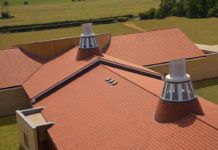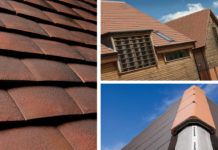

For those of us in the roofing industry who are involved in the writing and revisions of roofing standards, the process can seem painfully slow and sometimes endless – particularly the writing of European (CEN) Standards.
However, considerable progress has been achieved in the last 20 years. Manufacturing Standards for clay and concrete roof tiles are now mature, honed to a fine degree, and are generally regarded as ‘performance-based’ rather than prescriptive. This means that they do not prescribe things such as product size or shape, but concentrate on the required performance, such as minimum transverse strength, dimensional tolerances, weather and frost resistance, etc. The technical performance of tiles is now well understood and set, with only minor amendments required each time a Standard is revised, usually every five years. The introduction of European Tile Standards has been particularly important in encouraging the development of modern, single lapped interlocking open gauge tiles, such as Wienerberger Sandtoft’s Cassius and 20/20 New Generation clay tiles. These tiles are manufactured to much closer tolerances than was previously admissible in order to maintain weathertightness at low roof pitches, as well as installed appearance.
Free trade area
Since Europe became a free trade area for its member states, European Standards for construction materials have played an important role in setting common product standards. CE marking for example, together with its associated Declarations of Performance, is a statement of compliance with the relevant Standard, and also ensures that products can be freely traded across Europe without any unnecessary barriers to cross-border trade that would otherwise arise through potential non-compliance with any European States’ unique product Standard requirements.
Standard revision
Of course Standards will always need revision, particularly as continual research provides new understanding on topics such as windloadings, frost resistance, wind-driven rain resistance etc. But, with the technical manufacturing Standards now largely set, the industry expert committees who write the Standards are increasingly turning their attention to other matters; for example, to the environmental sustainability of the construction products and the buildings they are used in.
European Standard for Sustainability of Construction Works; EN 15804, first published in 2012, deals with the environmental impact of building construction by providing the core product category rules (PCR) for producing environmental product declarations (EPD) for construction products, construction services and construction processes. It also sets out the structure for ensuring that all EPD’s can be developed in a harmonised way.
An EPD also enables the manufacturer to declare a Reference Service Life (RSL) of its products; for example, because of the high durability and low maintenance of clay, the RSL of clay construction products is 150 years.
In addition to the EN 15804 Standard, Tile and Brick Europe (TBE) has developed a set of product category rules that will ensure a common approach across Europe for developing EPDs for clay products. Other industries, such as the concrete products sector, have similarly developed PCR’s for their own sectors. The advantage of defining the rules for determining an EPD is that they can be based on accurate and verifiable environmental information.
In order to assess the full impact of a product, a life-cycle assessment (LCA) must be carried out. This covers all the life stages of a product, from ‘cradle to grave’, specifically (1) the production process; (2) the building construction process, including delivery of materials to site; (3) use stage, which includes maintenance, repair, replacement etc.; (4) end-of life stage, which includes demolition, transport, waste processing and disposal; and (5) any potential benefits of the reuse or recycling of materials after the end of life stage.
The environmental impact indicators used in EN15804 are based on resource use, waste categories and output flows relating to disposal or recycling. TBE has also proposed some additional indicators relating to land use, eco toxicity and human toxicity.
For further information on the development of construction-sector EPDs, a TBE Guidance for Developing an EPD document is available from: www.wienerberger.co.uk
On the horizon
There are also other topics on the Standards horizon, such as regulated dangerous substances. Although we all know from long experience that clay and concrete roof tiles do not contain or leach any harmful substances in any significant quantities, test methods and Standards will need to be developed in order to prove that products are environmentally safe.
There is a lot of work ahead in the years to come for the expert groups in developing better understanding of the environmental impacts of our construction materials and methods.



